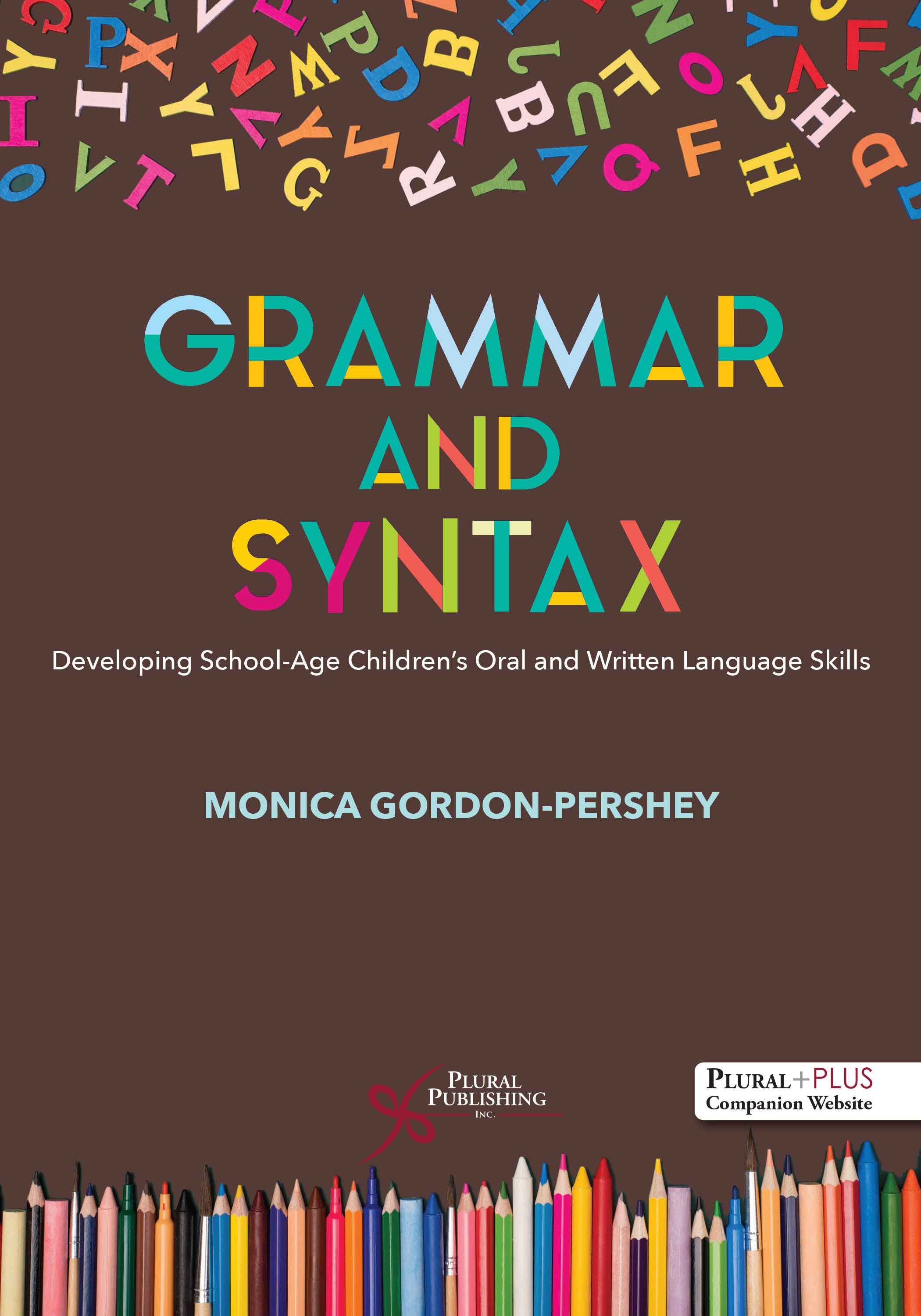
Grammar and Syntax: Developing School-Age Children's Oral and Written Language Skills
First Edition
Monica Gordon-Pershey
Details: 383 pages, B&W, Softcover, 7" x 10"
ISBN13: 978-1-94488-355-3
© 2022 | Available
For Instructors
Purchase
Grammar and Syntax: Developing School-Age Children's Oral and Written Language Skills provides insight for clinical speech-language pathologists (SLPs) as well as students and faculty in communication sciences and disorders programs. Offering a practicing speech-language pathologist’s perspective on school-age language development, this professional reference book focuses on later language development and the crucial role oral grammar and syntax plays in successful academic performance.
This resource synthesizes the four main components of professional expertise for SLPs: academic and theoretical knowledge, strategies for gathering diagnostic evidence, the ability to seek, understand, and apply evolving scientific evidence, and the application of therapeutic strategies. Designed to encourage creative approaches to curriculum-based speech-language therapy practices, Grammar and Syntax: Developing School-Age Children's Oral and Written Language Skills provides the foundation SLPs need to help children and adolescents achieve academic success.
Key Features
- Anticipation guides at the beginning of each chapter stimulate readers to prepare for reading
- Bolded key terms and a comprehensive glossary improve retention of material
- Related resources in addition to cited sources provide jumping off points for deeper understanding
- Tables of language development references to use at-a-glance
- An evidence-based approach that references many primary and historical sources, including the “big names” in each content area
- A unique combination of the perspectives of language development and language disorders with literacy development and literacy difficulties
- A PluralPlus companion website with PowerPoint lecture slides for instructors and study quizzes for students
Reviews
“This book is a resource for practitioners, teachers, and students working with children with language deficits. The book provides a framework on which to ground one's clinical preparation and treatment implementation in oral and written language skills. A companion website is included for study purposes.
The book's purpose is to prepare speech-language pathologists (SLPs) to gain a deeper understanding of the complexities of language impairment and to broaden their perspective in regard to recognizing the implications of language deficits. The intention of the book is to help readers increase their knowledge of grammar and syntax with a focus on three skill sets: describing, diagnosing, and intervening deficits of grammar and syntax. Each section of the book provides a focus on providing readers the opportunity to develop expertise in the area of understanding how language deficits affect students' literacy and ability to participate in literacy activities. This is an integral part of the scope of practice of SLPs, directly recommended by the American Speech-Language-Hearing Association (ASHA).
Authored by a speech-language pathologist with nearly 40 years of experience in the clinical and academic setting, this book aims to target an audience of practitioners, researchers, university faculty, and students in speech-language pathology courses. Additional audiences include teachers of regular education and special education students in primary and secondary education who desire to supplement their curriculum with this information on grammar and syntax alongside their current knowledge and practices.
A prominent feature of the book is the organization of the headings, which include bold headings in a shaded box as well as subheadings in bold only. Readers can easily familiarize themselves to its organization either when skimming or when intentionally searching for a section… There is a glossary at the end of the book, which is a valuable inclusion for readers adding to their lexicon through acquisition of related vocabulary. The companion website includes study questions in order to encourage critical thinking concerning the topics…
This book is dedicated to providing its readers with knowledge of using professional vocabulary to describe components of grammar and syntax, which is a notable inclusion throughout the book. Another notable aspect is its aim to teach about a vast number of informal diagnostic approaches versus standardized approaches alone. Lastly, it is notable that the book includes informal suggestions to its readers, allowing room for clinical judgment, experience, and creativity as opposed to a reliance on complete formal wording for treatment goals and objectives. The book successfully fulfills its purpose -- to increase users' knowledge in the areas of describing grammar and syntax, to explain methods to assess and identify deficits in grammar and syntax, and to provide suggestions for effective intervention for grammar and syntax.”
– Melissa Raymond, M.S., Biola University, from Doody’s Reviews (September 2022)
Preface
Acknowledgements
Reviewers
Chapter 1. Introduction: Educational Contexts for Improving School-Age Learners’ Grammar and Syntax
Anticipation Guide
A Professional Reference Book
Grammar and Syntax: Professional Skills for Descriptions, Diagnosis, and Interventions
Terminology Used in This Book: “Language Impairment”
Language Deficits Versus Language Differences
Chapters 2 Through 6: The Developmental Trajectory for Grammar and Syntax
Learners Who Will Benefit When Professionals Apply the Content of This Text
Language Arts and Literacy Instruction in the Schools
Populations of Students Who Have Language Needs That May Impede Their Success in Language Arts and Literacy Instructional Contexts
A Closer Look at Diagnostic Designations
Professional Considerations for SLPs
Mainstream Education: An Emphasis on Metalanguage
Educational Systems: The Contexts that Surround School-based Speech-Language Therapy
Collaborative Goals and Service Delivery
Chapter 2. The Development of Grammar and Syntax: Foundations from First Words through the Preschool Years
Anticipation Guide
Language Form
Structural Linguistics and Generative Grammar
Grammaticality
Syntactic Competence and Performance
Defining and Describing Morphology
Free Morphemes and Bound Morphemes
Defining and Describing Syntax
Grammatical Categories
Grammatical Person: Pronoun Usage
Grammatical Number
Grammatical Tense
Grammatical Aspect
Grammatical Mood
Grammatical Voice
Grammatical Gender
The Development of Morphology and Syntax
Order of Emergence of Morphological Forms
Order of Emergence of Syntactic Forms
Successive Single Word Utterances
Linear Syntactic Relationships
Hierarchical Syntactic Relationships
Defining and Describing Language Content and Its Relationship to Form
Content: A Fund of Information
Content Categories
Verb Phrase Constituents
Negation
Question Formation
Pronouns
Measuring Length and Complexity of Utterances
Mean Length of Utterance (MLU)
MLU as Corresponding to Syntactic Forms
Accuracy and Representativeness of MLU
T-Units
C-Units
Manifestations of Impairment of Morphology and Syntax in Preschool Children
Syntactic Regularities and Syntactic Variation
Developmental Constructs
Characteristics of Form Difficulties
Morpheme Use
Phrase Construction and Linguistic Productivity
Negation
Question Formation
Syntactic and Morphological Development in the Early School Years
Phrase Elaborations
Noun Phrase Elaboration
Verb Phrase Elaboration
Forming and Combining Clauses
Coordination
Complementation
Embedding
Passive Voice
Pronouns
Conjunctions
Prepositions
Later-Developing Morphology
Summary: Later Developmental Expectations
Negation
Contractions
Question Formation
Sentence Formation and Clausal Constructions (Sometimes Appearing as Noun Phrase Elaborations and Verb Phrase Elaborations)
Tense, Aspect, Mood, Voice
Manifestations of Syntactic Impairment in the School-Age Years
Language and Communication
Impairment in Receptive Syntax
Impairment in Syntactic Regularities and Syntactic Variation
African American English Features of Morphology and Syntax
Chapter 3. Cognitive-Linguistic, Psycholinguistic, and Pragmatic Language Factors That Influence the Competent Use of Grammar and Syntax Throughout Childhood and Adolescence
Anticipation Guide
The Magic of Turning 4
Cognitive-Linguistic Competence as Foundational to Grammatical and Syntactic Skills
Cognitive Connectionism
Information Processing and Syntactic Abilities
Psycholinguistic Explanations for Grammatical and Syntactic Abilities
Pragmatic Language Competence as Foundational to Grammatical and Syntactic Skills
The Cognitive Processes Underlying Pragmatic Competence
Pragmatic Language Purposes: Ideational, Interpersonal, and Textual
Communicative Acts and Their Syntactic Properties
Typologies of Message Function and their Syntactic Properties
Pragmatic Cohesion
The Pragmatics of Discourse
Social Pragmatics and Linguistic Pragmatics
Social Validity
Manifestations of Pragmatic Language Impairments
How Language is Impaired: Structural and Functional Deficits
Chapter 4. Grammar and Syntax in School-Age Children and Adolescents: Conceptualizations and Measurements
Anticipation Guide
Describing Conceptualizations About Grammar and Syntax
Measurement of Grammar and Syntax Abilities
Iterventions for Spoken Grammar and Syntax
Describing the Form of Language: The Grammatical and Syntactic Elements of Mature English
Learners’ Ability to Develop Syntactic Language Complexity
Receptive Language Influences on Expressive Syntactic Maturity
Learning and Memory
Social Interactionism, Social Constructivism, and Dynamic
Assessment of Grammar and Syntax
Metalinguistic Awareness of Syntax
Deficits in Grammar and Syntax
Syntax Delay Versus Syntax Disorder
Syntax Delay
Syntax Disorder
Commonalities Between Syntax Delay and Syntax Disorder
Linguistic Considerations for Measurement of Older Learners’ Syntactic Abilities
Grammatical Elements
Grammatical Elements Computational Analysis: Mean Length of Utterance in Morphemes
Clausal Structures
Clausal Elements Used in Grammatical Transformations of Sentences
How the Use of Clausal Structures Matures
Approaches to Language Sampling and Analysis for School Age Children and Adolescents
Elicitation of a Language Sample
Manual and Computer-Based Computational Analyses of Language Samples
Manual Computational Analysis: Clausal Structures Measured by the Subordination Index
Computer-Based Analyses
Testing to Reveal Grammatical and Syntactic Capabilities and Performance
The Utility of Information from Achievement Testing, Abilities Testing, and Diagnostic Testing
Considerations for Choosing Commercially Available Tests of Grammar and Syntax
Commercially Available Tests of Grammar and Syntax
The Properties of Tests of Grammar and Syntax
Items that Test Receptive and Expressive Syntax
Item Analyses of Tests of Grammar and Syntax
Test Questions that Probe Grammatical and Syntactic Skills: Performance Demands
Test Questions that Probe Grammatical and Syntactic Skills: Metalinguistic Awareness
Clinician-Constructed Probes of Grammatical and Syntactic Skills
Enhancing Metalinguistic Capabilities
Metalinguistic Strategies for School Age and Adolescent Learners
Therapy Should Have SPICE
Chapter 5. Reading Comprehension: Processing Sentence-Level Grammar and Syntax to Understand the Meaning of Text
Anticipation Guide
Language Form and Reading Comprehension
SLPs’ Services to Aid Language Form and Reading Comprehension
Spoken Grammar as Preparation for Reading Comprehension
Research on SLPs’ Interventions Related to Syntax and Literacy
The Cognitive-Linguistic Elements of Reading Comprehension
Language Form is Essential to Learning the Meanings of Words
Prosody and Sentence Reading
The Importance of Reading Comprehension for Older Students
The Comprehension Demands of Informational Text
Reading Difficulties in School Age and Adolescent Learners
Achieving Adult Literacy
Prose Literacy: Continuous Text
Docement Literacy: Noncontinuous Text
Quantitative Literacy: Numerical Skills
Sentence-Level Grammar and Syntax: Identifying Students’ Needs
Response to Intervention (RTI) and Multi-tiered Systems of Support (MTSS) Frameworks
Sentence-Level Grammar and Syntax: Suggestions for Interventions
Interventions for Grammar and Syntax in the Context of the Multiple Cognitive-Linguistic Skills Needed for Reading
Plan for Activities for Before, During, and After Reading
Mini-Lessons
Linguistic Microstructures and Macrostructures
Prosodic Interventions
Grammar Instruction
Cloze Procedures Designed to Generate Grammatical Elements
Language Objectives for Grammar and Syntax Based on Academic Standards
Chapter 6. Improving Grammar and Syntax in Written Language
Anticipation Guide
School Writing Expectations
The Components of Skilled Writing
Diagnosing Written Language Difficulties
Written Language Difficulties: Structural and Functional Deficits
Syntactic Knowledge and Syntactic Processing
Formal Assessment
Informal Assessment
Sampling and/or Inventorying Written Language Performance
Informally Assessing Grammar and Syntax Using Probes
A Written Language Assessment Tool
Interventions to Develop the Grammatical and Syntactic Components of Skilled Writing
A Model for a Continuum of Interventions
Content, Process, and Product: Three Considerations for Interventions
Grammar and Syntax Instruction and the Teaching of Writing
Grammatical and Syntactic Necessities
Oral Language Usage to Guide Written Language Targets
Written Sentence Skills
Sentence Expansions
Intersentential Syntactic Skills
Revising and Editing
Interventions to Develop Skills in Written Composition
Semantic Content: Language Choices When Writing
Pragmatic Consideration for Composition Skills
Glossary
References
Index
Grammar and Syntax: Developing School-Age Children's Oral and Written Language Skills comes with access to supplementary materials on a PluralPlus companion website.
STUDENTS AND PROFESSIONALS:
To access the student materials, you must register the access code printed on the inside front cover of your book on the companion website.
INSTRUCTORS:
To access the instructor materials, you must contact Plural Publishing, Inc. to be verified as an instructor and receive your access code.
Email: instructormaterials@pluralpublishing.com
Tel: 866-758-7251 (toll free) or 858-492-1555
*Note: If you have purchased this book used or have rented it, your access code will not work if it was already redeemed by the original buyer of the book. Plural Publishing does not offer replacement access codes for used or rented books.
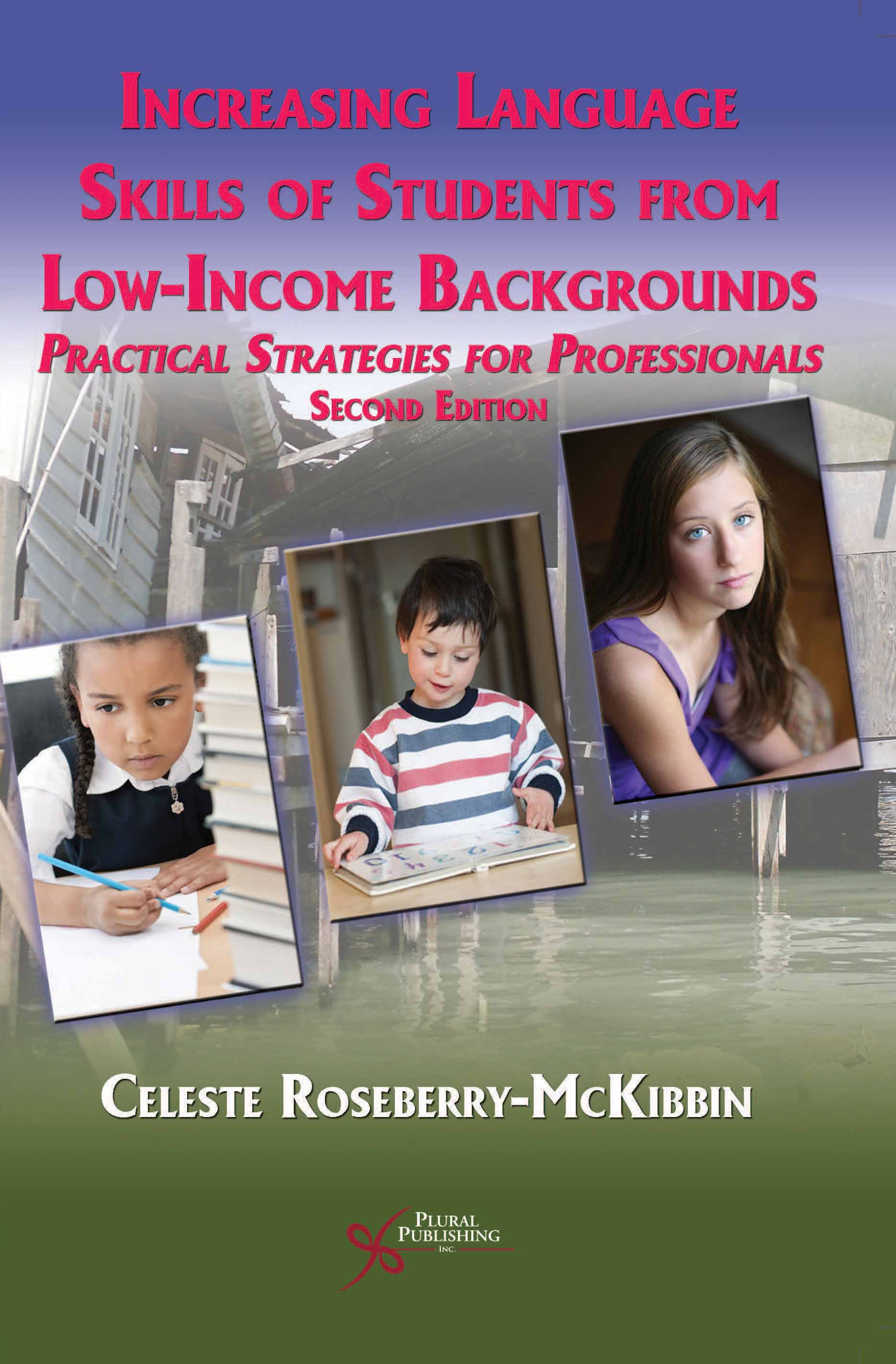
Increasing Language Skills of Students from Low-Income Backgrounds: Practical Strategies for Professionals
Second Edition
Celeste Roseberry-McKibbin
Details: 480 pages, B&W, Softcover, 6" x 9"
ISBN13: 978-1-59756-497-7
© 2013 | Available
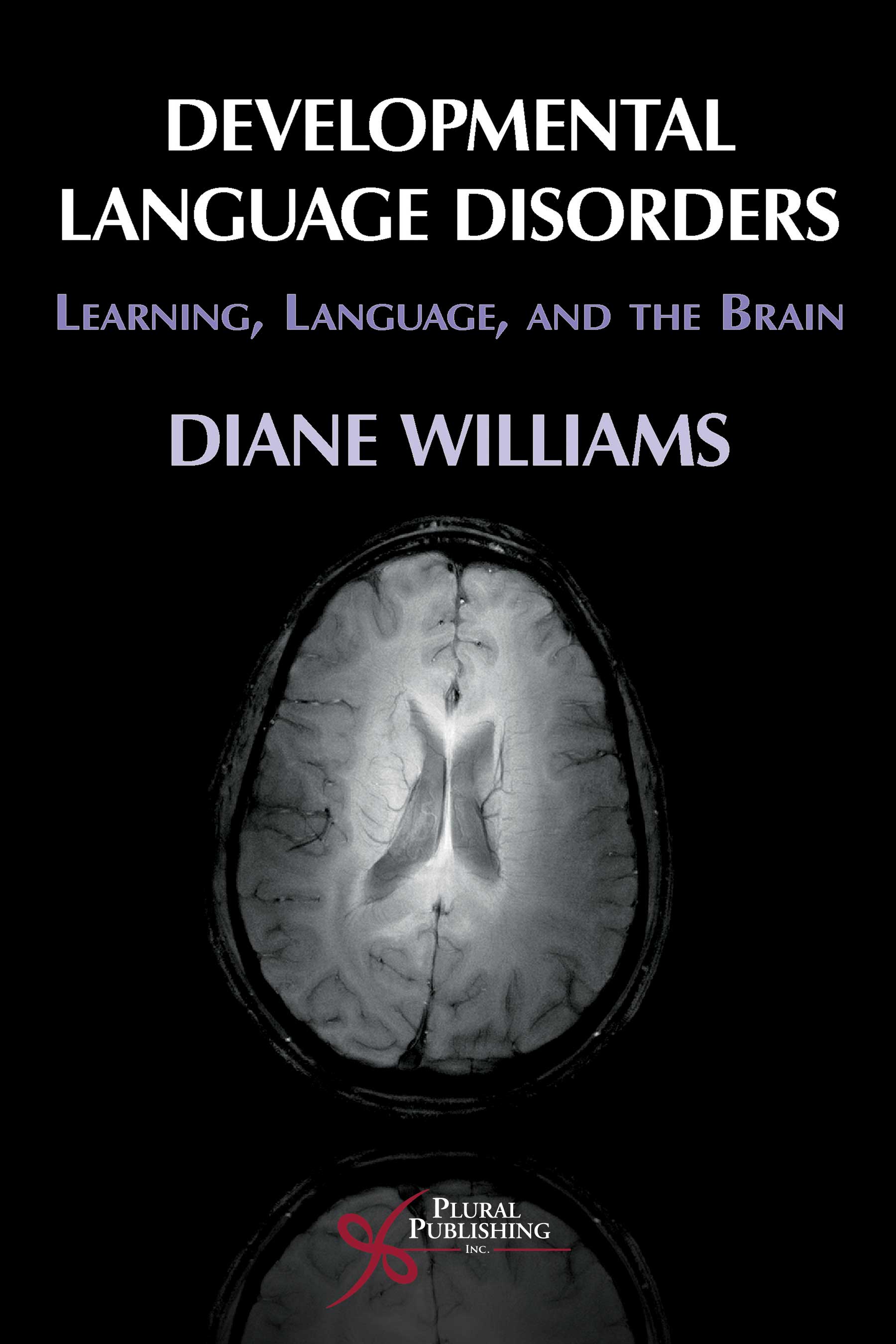
Developmental Language Disorders: Learning, Language, and the Brain
First Edition
Diane L. Williams
Details: 336 pages, B&W, Softcover, 6" x 9"
ISBN13: 978-1-59756-189-1
© 2009 | Available

Language Development
First Edition
LouAnn Gerken
Details: 257 pages, B&W, Softcover, 6" x 9"
ISBN13: 978-1-59756-263-8
© 2009 | Available
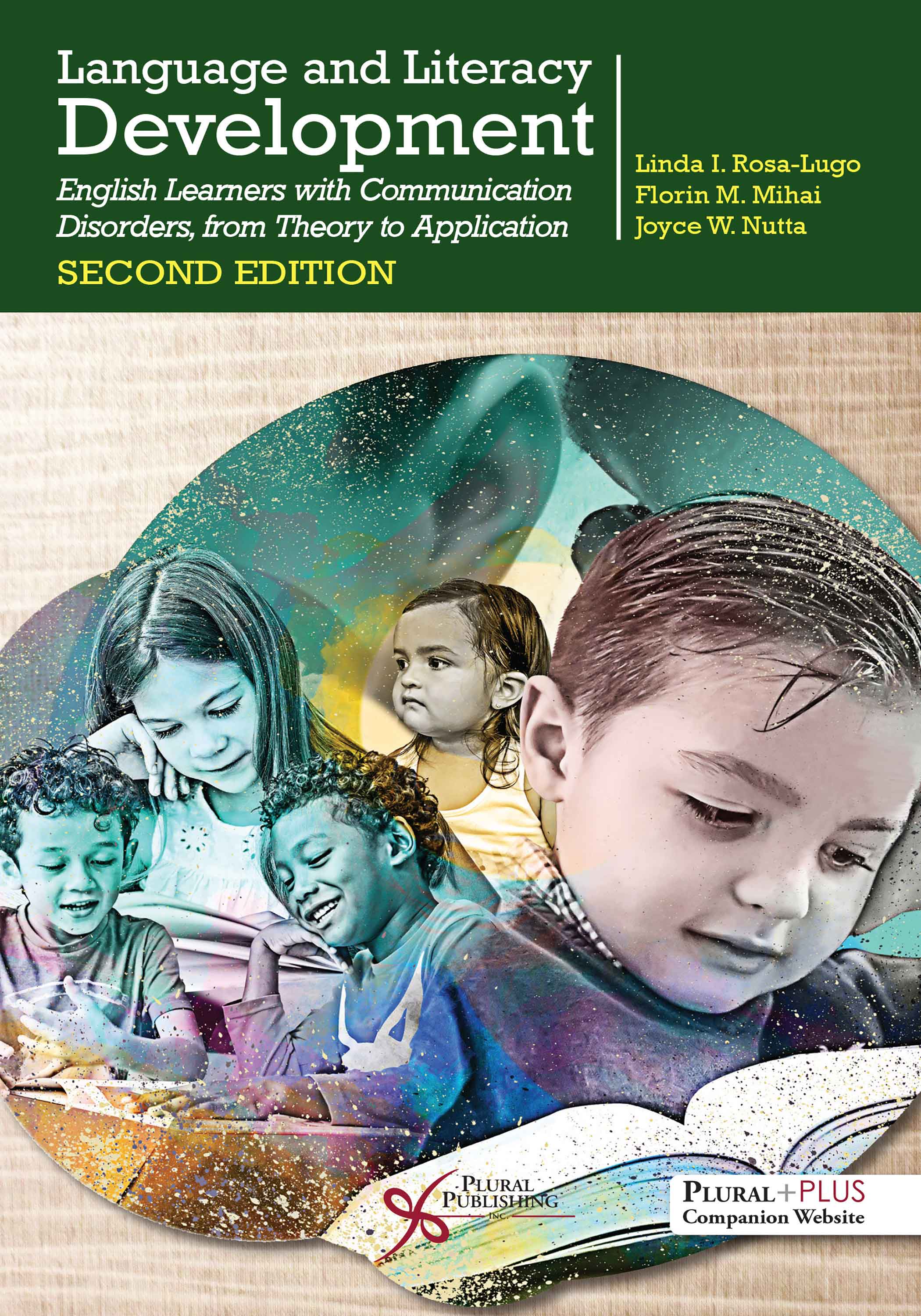
Language and Literacy Development: English Learners with Communication Disorders, From Theory to Application
Second Edition
Linda I. Rosa-Lugo, Florin Mihai, Joyce W. Nutta
Details: 432 pages, B&W, Softcover, 6" x 9"
ISBN13: 978-1-63550-153-7
© 2020 | Available
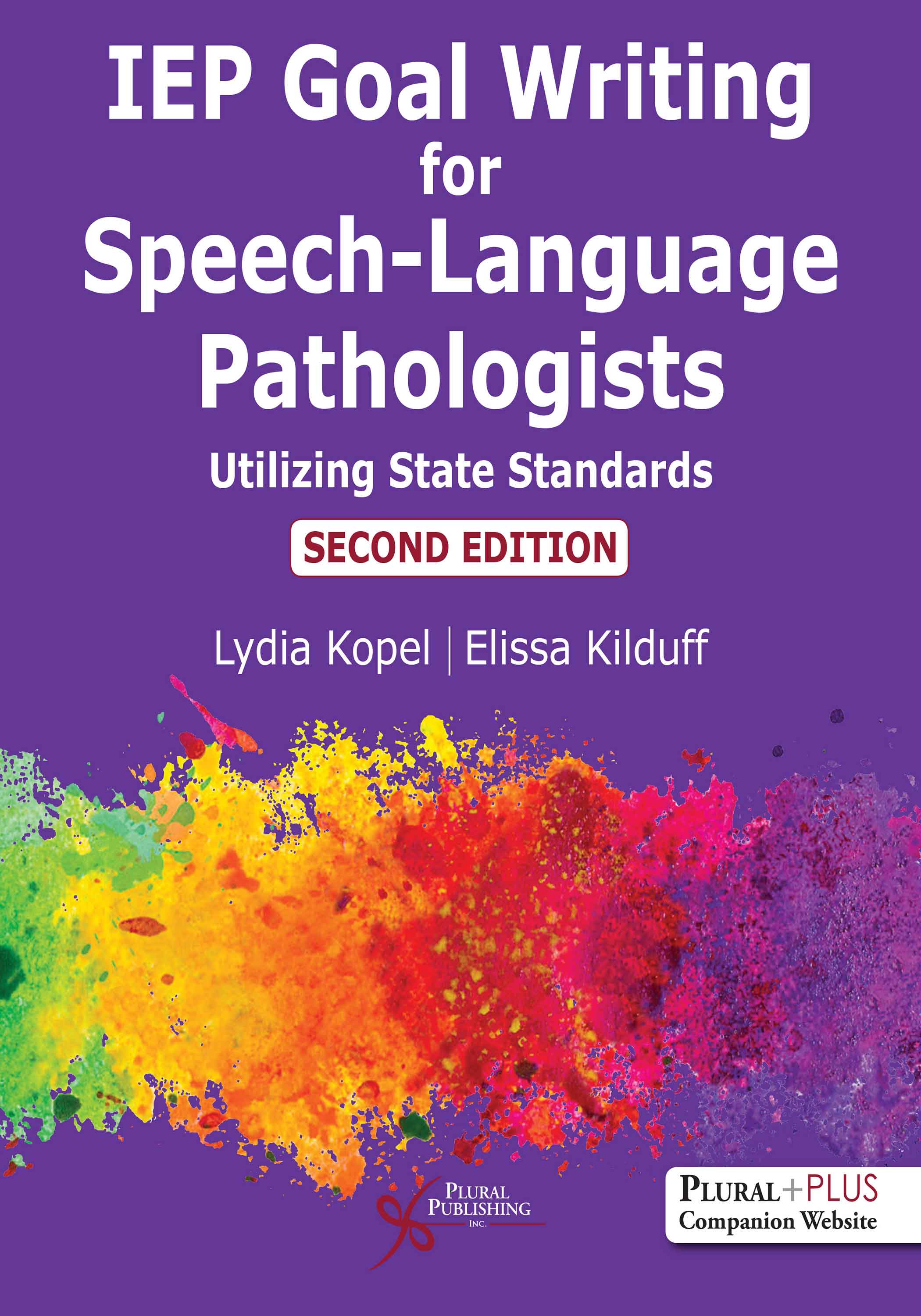
IEP Goal Writing for Speech-Language Pathologists: Utilizing State Standards
Second Edition
Lydia Kopel, Elissa Kilduff
Details: 243 pages, B&W, Softcover with layflat binding, 8.5" x 11"
ISBN13: 978-1-63550-202-2
© 2021 | Available
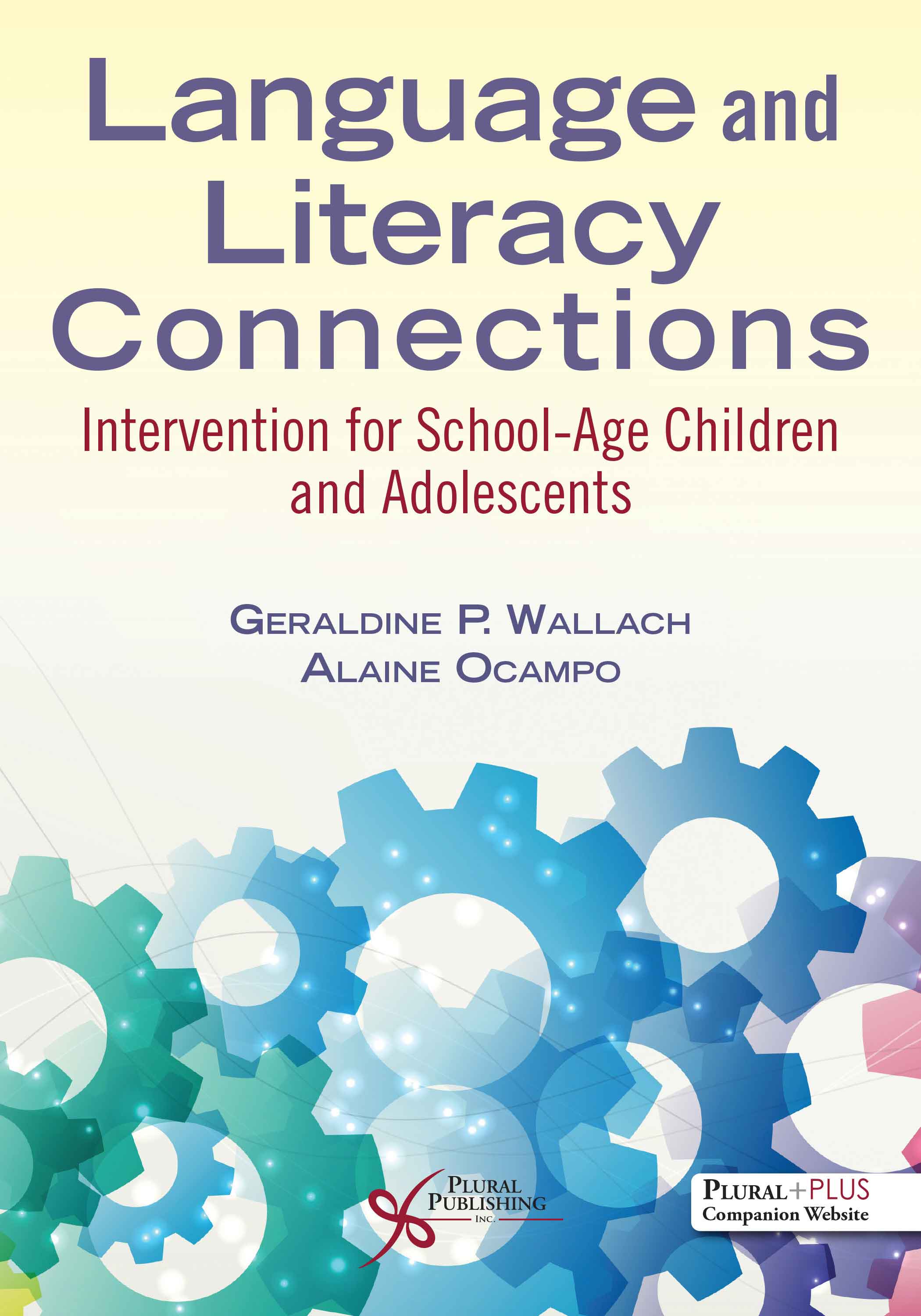
Language and Literacy Connections: Intervention for School-Age Children and Adolescents.
First Edition
Geraldine P. Wallach, Alaine Ocampo
Details: 358 pages, B&W, Softcover, 7" x 10"
ISBN13: 978-1-63550-213-8
© 2022 | Available
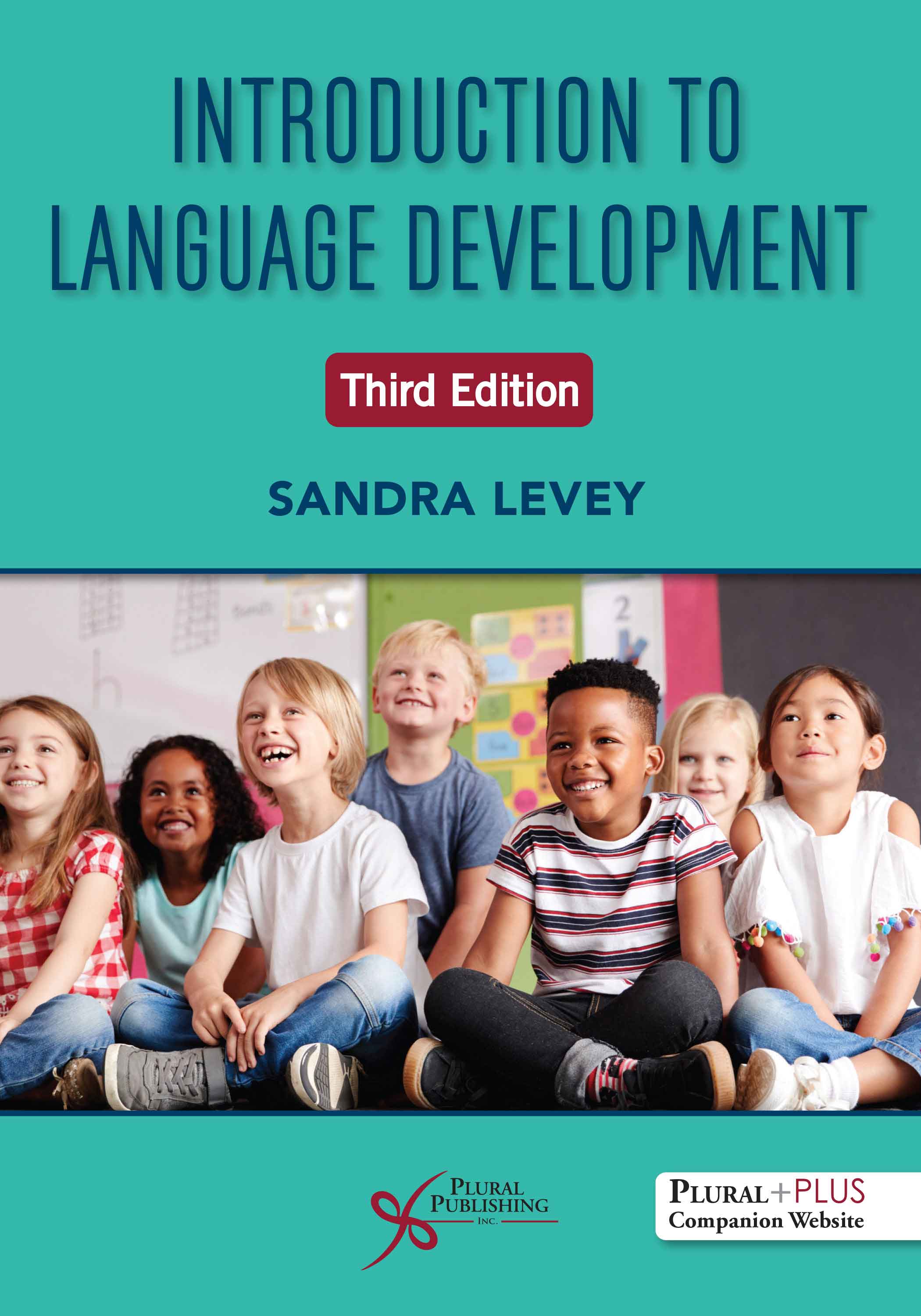
Introduction to Language Development
Third Edition
Sandra Levey
Details: 317 pages, 2-Color, Softcover, 7" x 10"
ISBN13: 978-1-63550-377-7
© 2024 | Available
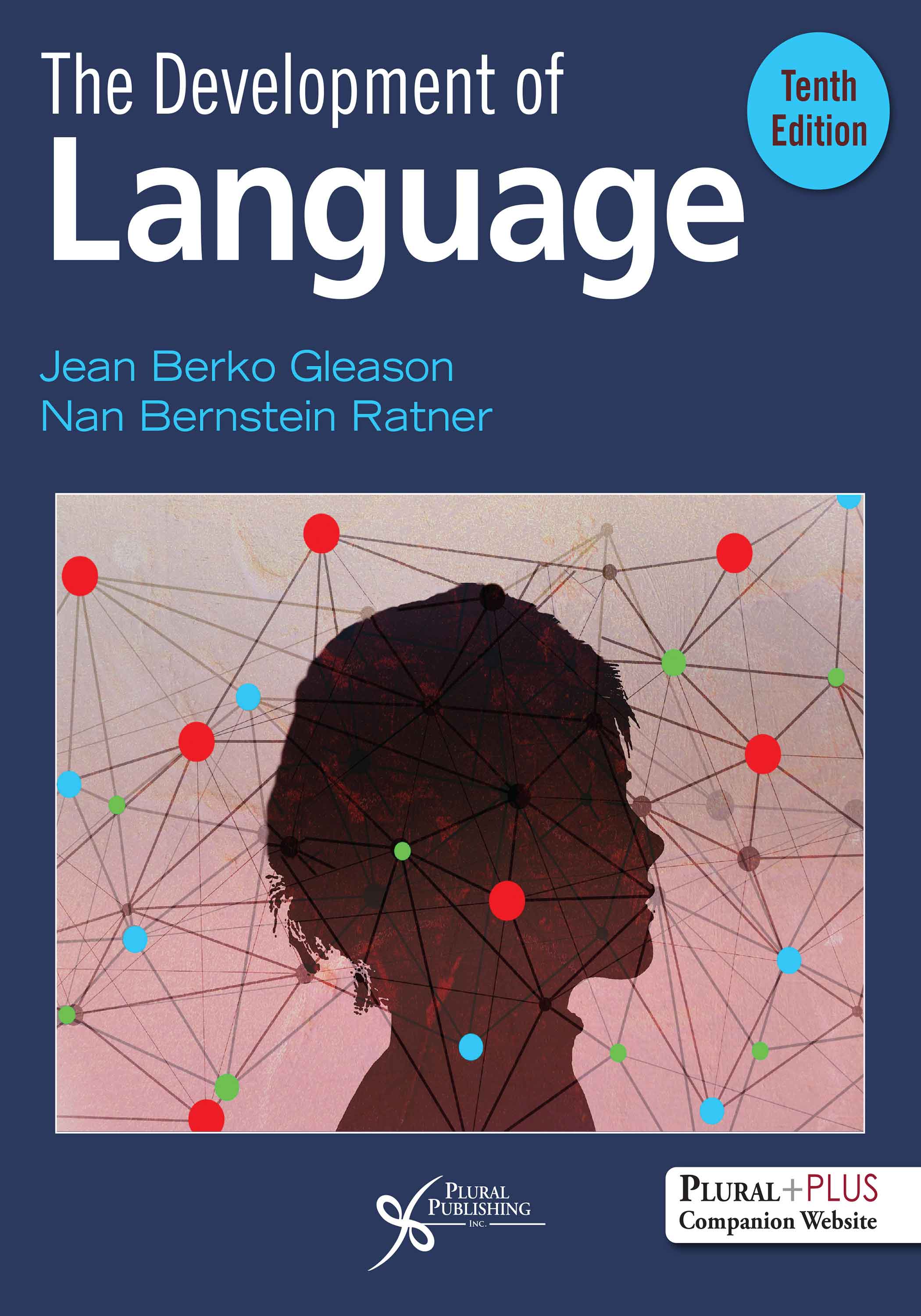
The Development of Language
Tenth Edition
Jean Berko Gleason, Nan Bernstein Ratner
Details: 444 pages, Full Color, Softcover, 8.5" x 11"
ISBN13: 978-1-63550-426-2
© 2024 | Available
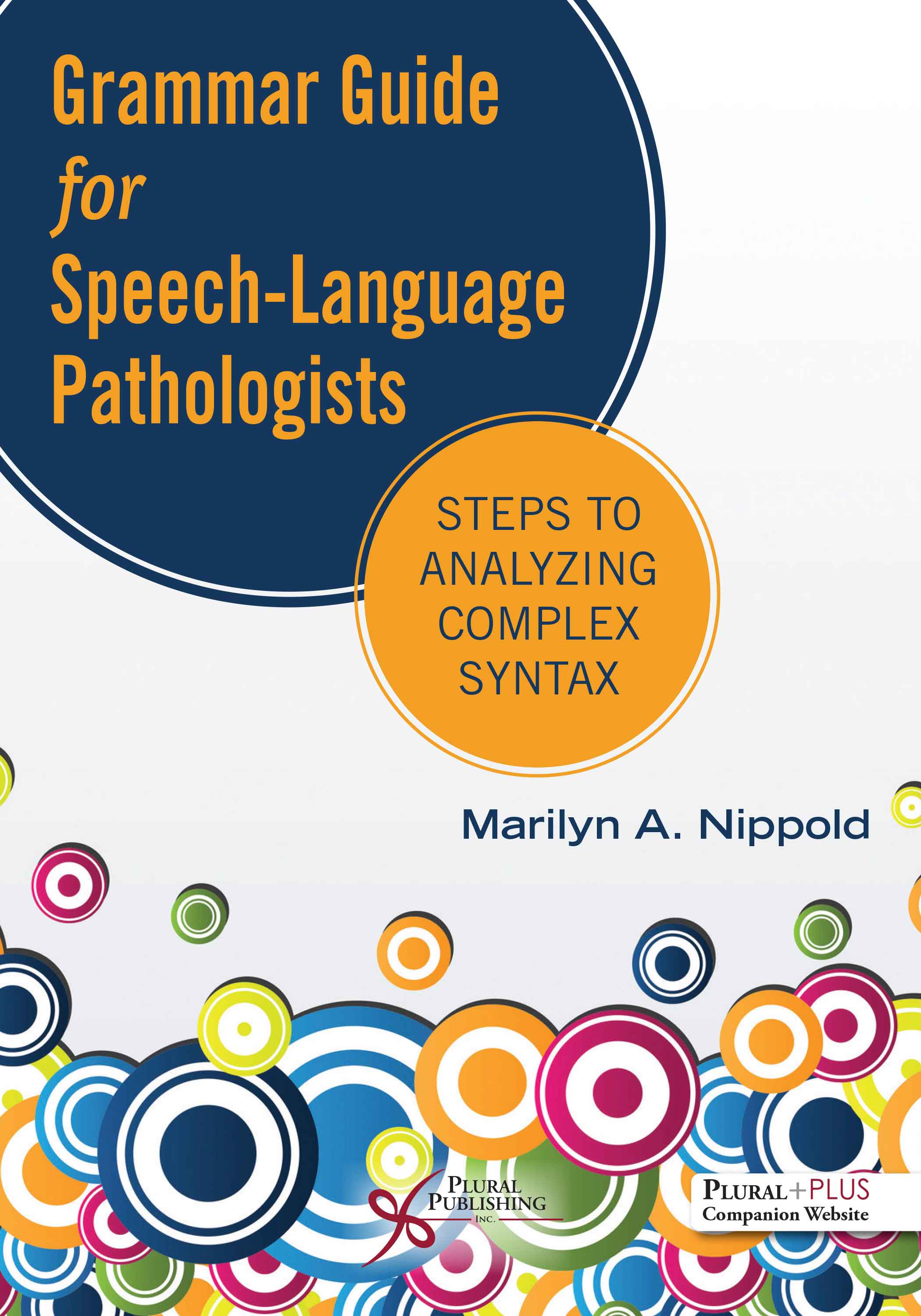
Grammar Guide for Speech-Language Pathologists: Steps to Analyzing Complex Syntax
First Edition
Marilyn A. Nippold
Details: 251 pages, B&W, Softcover, 7" x 10"
ISBN13: 978-1-63550-393-7
© 2023 | Available
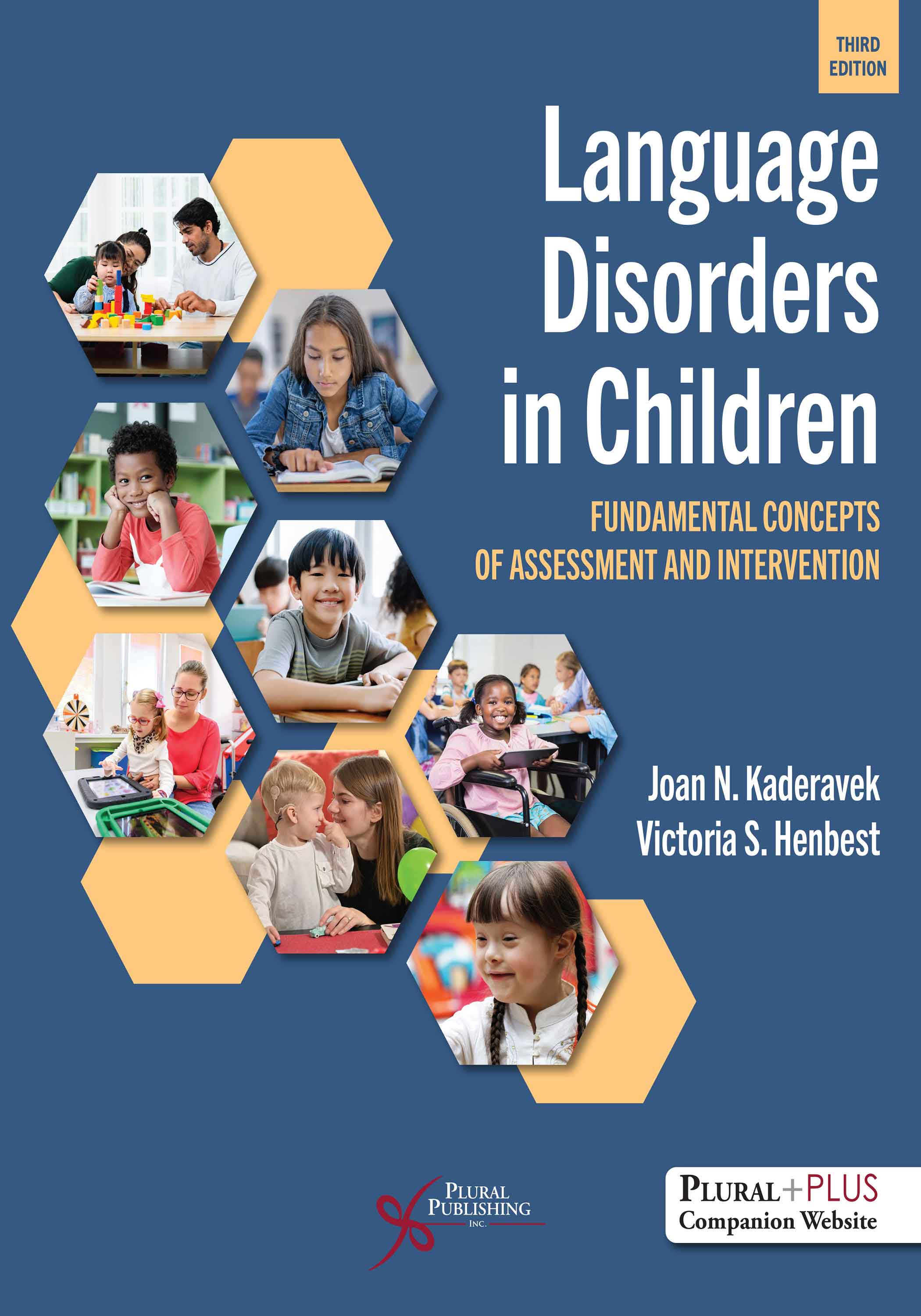
Language Disorders in Children: Fundamental Concepts of Assessment and Intervention
Third Edition
Joan N. Kaderavek, Victoria S. Henbest
Details: 454 pages, 2-Color, Softcover, 8.5" x 11"
ISBN13: 978-1-63550-758-4
© 2026 | Available

